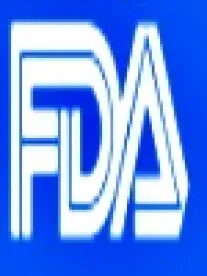The FDA recently issued a draft Guidance titled, “Guidance for Industry: Assessing the Effects of Significant Manufacturing Process Changes, Including Emerging Technologies, on the Safety and Regulatory Status of Food Ingredients and Food Contact Substances, including Food Ingredients that are Color Additives.” Although broader in scope, this draft Guidance covers the use of nanotechnology in the manufacture of food ingredients, including color additives and food contact substances, e.g., packaging. Similar to the message of a simultaneously issued draft Guidance on the use of nanotechnology in cosmetics, the message of this draft Guidance is that food or packaging manufacturers who incorporate nanoscale ingredients into their products should be prepared to prove that the resulting products are safe and that appropriate tests were used to validate their safety.
The draft Guidance includes a review of the statutory and regulatory provisions governing food, food additives, and food contact substances. Food is considered adulterated if it includes a poisonous or deleterious substance or an unsafe food or color additive. In this context, “unsafe” means “not pre-approved by FDA” unless the additive is generally recognized as safe (“GRAS”) by experts in the field. In general, color additives must also be pre-approved and there is no GRAS exception for color additives. FDA’s approval of food products assumes that they are manufactured according to good manufacturing practices (“GMP”).
The draft Guidance then describes FDA’s process for assessing the safety of a food substance. In connection with the manufacturing process, the draft Guidance notes that the manufacturing process can affect the identity of the food, the conditions of its use, and the level of impurities it contains. The draft Guidance then states:
As with any other manufacturing technologies applied to food, nanotechnology and other emerging technologies may introduce issues that warrant additional or different evaluation during a safety assessment of a food substance. For example, so-called nano-engineered food substances can have significantly altered bioavailability and may, therefore, raise new safety issues that have not been seen in their traditionally manufactured counterparts (Ref. 13). . . . When a food substance is manufactured to include a particle size distribution shifted more fully into the nanometer range, safety assessments should be based on data relevant to the nanometer version of the food substance. Where nano-engineered food substances have new properties, additional or different testing methods may be necessary to determine the safety of the food substance...Thus, as with any studies to support the safety of food substances, studies to establish the safety of food substances manufactured using nanotechnology should have been appropriately validated for these materials.
For food or color additives that have been approved by regulation, foods that have been identified as GRAS, or food contact substances that have been approved via a food contact notification to FDA, when there is a significant change to the manufacturing process, including the incorporation of nanoscale ingredients, the draft Guidance recommends that the manufacturer take several steps:
- Determine what changes have been made to the food substance, including its physicochemical structure and properties, purity and impurities
- Conduct a safety assessment for the food substance, including the factors set forth above, bioavailability, and toxicity
- Consider whether the substance is within a relevant regulation, GRAS determination, or food contact notification
- Consult with FDA about your conclusions
- Make a regulatory submission if warranted
The draft Guidance states the FDA’s view that it is unlikely that nanotechnology applications in food substances will qualify as GRAS, so formal premarket review and approval will be necessary.
In short, manufacturers of foods, food or color additives, and food contact substances who plan to incorporate nanoscale materials into their products will have to consider conducting safety testing of their products, according to tests that are validated for use with nanoscale materials, and obtain the FDA’s approval prior to marketing the products, or risk FDA enforcement action.
As always, it is important to recall that FDA Guidance documents do not have the force of law, but rather simply represent the FDA’s current thinking on a topic.







 />i
/>i
